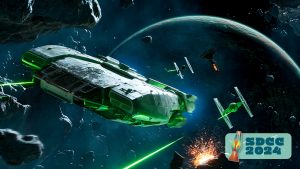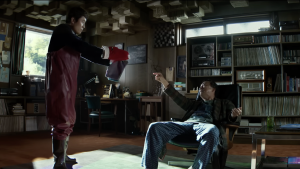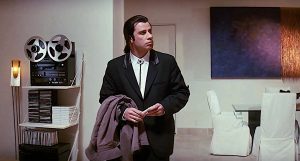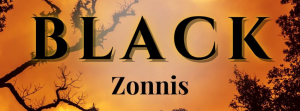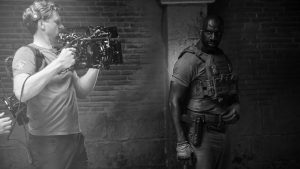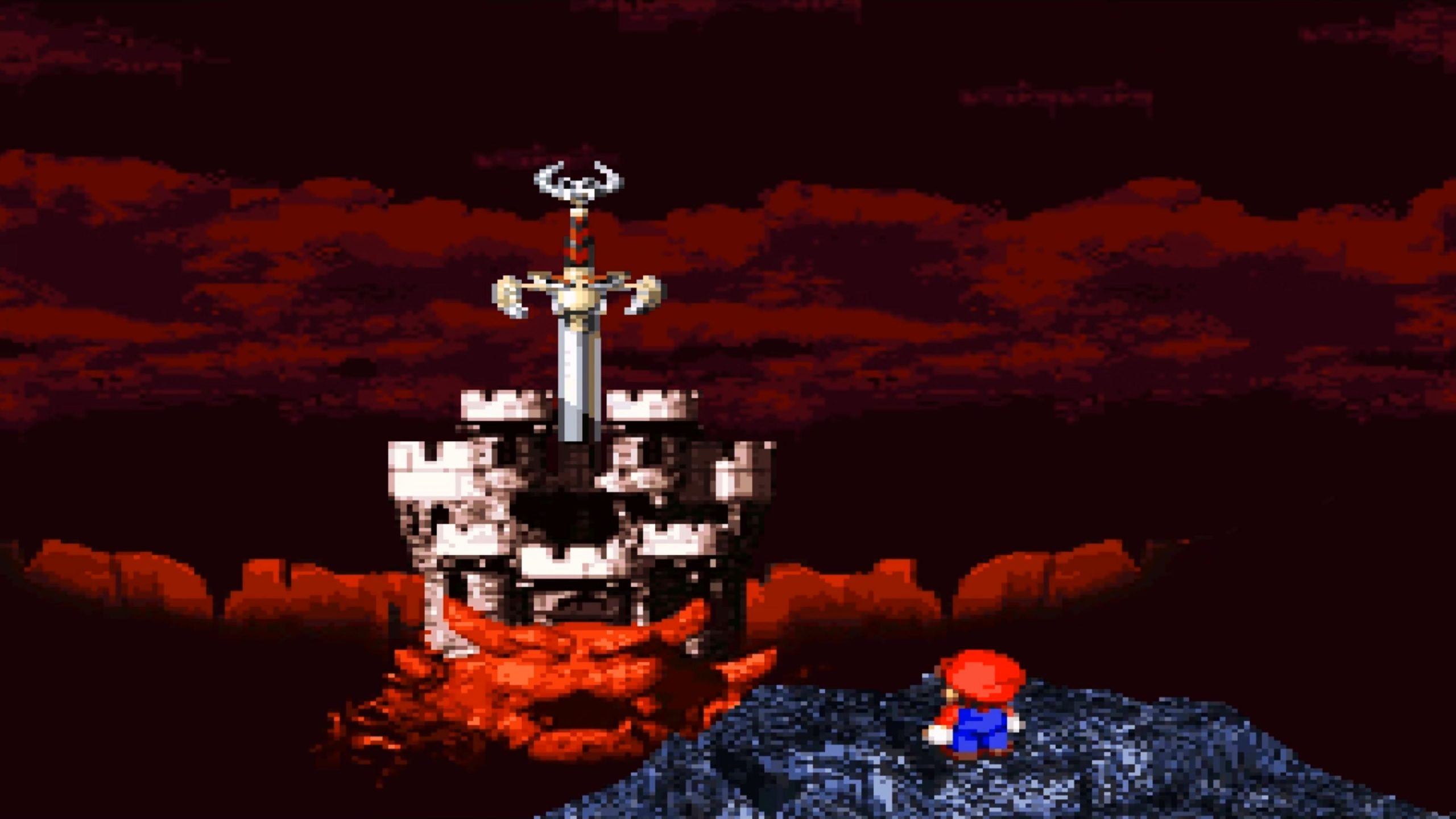
27 years after the original title wowed audiences on the Super Nintendo, the 1996 classic game Super Mario RPG is finally getting a full remake on the Nintendo Switch. More than branching out the Super Mario franchise effectively into the RPG gameplay genre, Super Mario RPG: Legend of the Seven Stars (as it was fully titled) is one of the best turn-based RPGs on one of the best consoles for RPGs ever released. Debuting three months before the launch of the Nintendo 64, Super Mario RPG does feel like the perfect (if sometimes bittersweet) swan song to the entire SNES RPG era.
Here is how Super Mario RPG came to be and how the game closed out not just Nintendo’s SNES era, but the SNES’ place as the premier console experience for RPGs.
The Golden Age of Nintendo RPGs
Square really hit its stride as a game developer on the SNES before its eventual merge with Enix in 2003 to form Square Enix. For Nintendo during the 16-bit era alone, Square developed Final Fantasy IV–VI for the Super Famicom, with Final Fantasy IV and VI being released for the SNES in North America as Final Fantasy II and III, respectively. Specifically for the North American market, Square also developed 1992’s Final Fantasy: Mystic Quest, which provided a more accessible RPG experience.
Beyond Final Fantasy, Square developed 1995’s Chrono Trigger and 1993’s Secret of Mana, with each title kickstarting their own respective franchises, albeit on PlayStation consoles. Though not quite as prolific as Square on the SNES, Enix would continue its successful Dragon Quest franchise on the Super Famicom, while publishing the well-received action RPGs Illusion of Gaia and ActRaiser for the Super Nintendo. Even Nintendo itself would get in on the RPG market, publishing EarthBound, the standalone sequel to Mother, in 1994.
Though other contemporary consoles had their own RPG releases, like Phantasy Star on Sega Genesis, the Super Nintendo really was the undisputed king of the RPG genre during its entire life cycle. Super Mario RPG expanded this SNES dominance further, providing cross-market appeal with its presentation and brand awareness. It was a rare kind of dream project between two companies at the top of the world. However, its origin story is much more humble than all of that.
The Origins of Super Mario RPG
Though Square’s early days are often celebrated, the truth of the company’s early legacy is slightly more complicated. Early on, Square largely developed RPG titles that were well-received critically and performed well commercially in Japan, but never quite found the same level of popularity in overseas markets. Titles as universally acclaimed as Chrono Trigger and Final Fantasy VI sold over two million copies in Japan, but each failed to sell one million copies in the North American market.
Towards the end of the SNES’ run, though, Super Mario creator Shigeru Miyamoto was struck by a desire to work directly with Square and create an RPG title starring Nintendo’s flagship character. An already appealing opportunity was made irresistible due to Square’s interest in creating a game that would better appeal to international audiences. Those shared interests would later become Super Mario RPG.
Though Square was looking for a hit at that time, they and Nintendo agreed early on that this project needed to be more than a mutually beneficial arrangement. It needed to be something special and different. Here is what Super Mario RPG co-director Chihiro Fujioka had to say about the origins of the project’s ambitious philosophy:
“The main concern for all involved was that we didn’t want to make a ‘normal’ RPG that simply substituted in Mario characters, like some cheap Final Fantasy sprite-swap. And yet, the basic core of the game was Mario. I mean, the title has ‘RPG’ in it, so we knew that much, but should it be an action RPG, a turn-based RPG, or something else? Our answer was it’s a Mario RPG, which means an RPG featuring things that only Mario can do: jumping, dashing, and so forth.”
That approach led to a variety of experiments. Early plans for Super Mario RPG had the project as more of an action RPG, rather than a turn-based one, but this changed by 1995 to the battle system present in the final game.
Given the success of 1994’s Donkey Kong Country, which employed a pre-rendered 3D art style that pushed the SNES hardware’s technical capabilities, Super Mario RPG took on a similar art style. To help facilitate this, Super Mario RPG cartridges were fitted with the Nintendo SA-1 chip: a microprocessor embedded within the cartridge that boosted its processing and memory power.
The Joys of Super Mario RPG
Aside from its presentation and battle system, Super Mario RPG starts out like any other classic Super Mario game as Mario raids Bowser’s Castle to rescue the kidnapped Princess Toadstool. This routine confrontation is quickly upended when Exor, a giant living sword, crashes through Star Road and Bowser’s Castle, sending everyone at the scene flying in different parts of the Mushroom Kingdom and its surrounding regions. In the confusion, the Smithy Gang, a group of villains led by the mechanical Smithy, invades the Mushroom Kingdom. Mario scrambles to collect fragments from Star Road, reunite with Princess Toadstool, and defeat Smithy.
Even with its unique gameplay style, Super Mario RPG feels very much like a natural expansion of the franchise, with a deeper look at the culture between the Yoshis and deepening of the lore behind Star Road, two prominent concepts introduced in Super Mario World which kicked off the SNES era in 1990. But Super Mario RPG also takes the time to create effective new elements, from fan-favorite allies Mallow, a living cloud, and Geno, an animated doll, to the environments like Monstro Town and Nimbus Land. These new elements feel as organic to the Super Mario franchise as they are memorable, brought to life with the same family-friendly art style and quirky sense of humor.
Like many contemporary RPGs, Super Mario RPG has a turn-based combat system but, reflecting its initial plans as an action RPG, there are timed action commands to enhance attacks and other techniques. This makes the combat much more engaging than any other, more passive, turn-based RPG on the SNES, while the game boasts up to five playable characters, each with their own special abilities. In the fun twist on the mythos, Super Mario RPG is also the first time Mario and Bowser work together against a common foe, and the first playable appearance of Bowser beyond 1992’s Super Mario Kart. With its pre-rendered animation style, vibrant sound design, and newly introduced corners of the Super Mario universe, Super Mario RPG provided a thoroughly unique and fresh experience for the franchise, and one that wouldn’t be replicated until the upcoming remake.
Even more than just standing impressively as one of the best RPG titles on the SNES amidst a stacked field, Super Mario RPG marks the end of Nintendo’s focus on the SNES moving forward. Composer Yoko Shimomura, who previously composed the soundtracks for Street Fighter II: The World Warrior and the acclaimed SNES RPG Breath of Fire, pushed the sound capabilities of the console as far as it could go for Super Mario RPG, providing it with a soundtrack that was as varied as it was memorable. Shimomura would additionally incorporate Koji Kondo’s iconic Super Mario music into the score, as well as tracks from Square’s own Final Fantasy IV to underscore Super Mario RPG’s place as a serious RPG experience.
This meticulous strategy and production paid off handsomely for Nintendo, with Super Mario RPG selling nearly 1.5 million copies in Japan alone, making it the third best-selling game in the country in 1996. In North America, Super Mario RPG exceeded Nintendo’s expectations and became the sixth best-selling game in the United States in 1996, surpassed only by Super Mario 64, the Donkey Kong Country sequels, Wave Race 64, and Madden ‘97 on the PlayStation. The game wasn’t entirely beaten by next-gen efforts, though. Super Mario RPG even outsold the original Resident Evil, the original Crash Bandicoot, and Star Wars: Shadows of the Empire that year.
The End of the SNES Era
Sony would take the crown with the following console generation, as Square and Enix turned their respective attention to developing titles for the original PlayStation, including 1997’s Final Fantasy VII and its subsequent sequels, 1999’s Legend of Mana and Chrono Cross, and 2000’s Dragon Quest VII, just to name a handful on the PSX.
After the SNES era, Nintendo would still have enormous success in the RPG space, most notably with the Pokemon franchise but, outside of that, its significant successes in the genre were considerably fewer and farther in between. Titles like 1998’s Quest 64 failed to connect with gamers in a lasting way, while Nintendo’s hold over the industry overall steadily began to slip until the launch of the Wii. The closest thing Nintendo has seen to an RPG resurgence outside of Pokemon was the company finally bringing the Fire Emblem and Xenoblade Chronicles successfully to Western audiences, but still being a far cry from its dominance in the genre in the ‘90s.
Super Mario RPG also offered the last glimpse of Mario and his amazing friends before Super Mario 64 completely changed how audiences saw the franchise later that year. The pre-rendered animation showcased how far the SNES had gone since Super Mario World officially catapulted Nintendo into the 16-bit era and, along with Donkey Kong Country, served as a precursor for Nintendo visually revamping its growing catalog of classic properties. After Super Mario RPG, it was all 3D, all the time, something that the PlayStation arguably outmatched Nintendo with in its execution in the subsequent era, closing out Nintendo’s golden age.
Despite facing healthy competition from Sega at the start of the decade, the SNES cemented Nintendo as the leader of the international gaming industry, avoiding the pitfalls Atari suffered in the ‘80s when they tried to follow-up the success of its hit console the Atari 2600. Super Mario RPG represents that ubiquity and dominance, with Nintendo taking creative risks to make even its most established properties feel relevant and fresh to contemporary audiences. By the end of the SNES era, Nintendo had earned a well-deserved sense of confidence that would be questioned as they faced an even greater competitor in Sony and Nintendo’s struggle to lead in the 64-bit generation.
After the SNES era, Nintendo would still have enormous success in the RPG space, most notably with the Pokemon franchise but, outside of that, its significant successes in the genre were considerably fewer and farther in between. Titles like 1998’s Quest 64 failed to connect with gamers in a lasting way, while Nintendo’s hold over the industry overall steadily began to slip until the launch of the Wii. The closest thing Nintendo has seen to an RPG resurgence outside of Pokemon was the company finally bringing the Fire Emblem and Xenoblade Chronicles successfully to Western audiences, but still being a far cry from its dominance in the genre in the ‘90s.
The Lasting Super Mario RPG Legacy
While the combination of Super Mario RPG’s memorable pre-rendered animation style and turn-based combat wouldn’t be replicated by Nintendo in 27 years, it is by no means the last RPG starring Mario. The following generation, Mario took on a 2.5D appearance with the inaugural Paper Mario game for the Nintendo 64 in 2000. Spawning its own series, Paper Mario retained the timed action moves in the midst of turn-based combat as it followed its own expansion into the Super Mario franchise.
On Nintendo’s handheld consoles, the Mario & Luigi series featured a more traditional art style while providing its own twist on RPG combat. The series began with 2003’s Mario & Luigi: Superstar Saga for the Game Boy Advance and also included the timed action mechanics introduced by Super Mario RPG. Mario & Luigi developer AlphaDream was founded by Super Mario RPG director Chihiro Fujioka, accounting for the visible similarities in its subsequent projects.
Beyond sales numbers, Super Mario RPG has stood the best of time better than its similarly well-received SNES RPG counterparts like Chrono Trigger and Breath of Fire. Being indelibly linked to the Super Mario franchise has undoubtedly helped with this, with the game serving as something of a gateway for RPG novices into the genre and Square’s library. Square would quietly partner with Sony moving forward, with Super Mario RPG as the ultimate parting project between Square and Nintendo. This, coupled by complicated licensing due to Square’s subsequent partnerships, informing Nintendo not revisiting major elements from the game gives Super Mario RPG a lasting mystique across the Nintendo flagship character’s extensive pantheon of games.
Super Mario RPG proved that Mario could have narrative-driven adventures that strayed from the Super Mario franchise’s platforming roots. Prior to this, Mario had appeared in spinoff titles before, but either in sports and arcade games like Super Mario Kart and Wrecking Crew or cameo appearances like the referee in Punch-Out!!. Super Mario RPG was the perfect synthesis of what made the SNES such a masterpiece of a console, especially its RPG library, and the upcoming remake recaptures the joy of this classic era, refined for modern sensibilities.
The Super Mario RPG remake goes on sale November 17 for the Nintendo Switch.
The post How Super Mario RPG Ended the SNES RPG Golden Age appeared first on Den of Geek.




